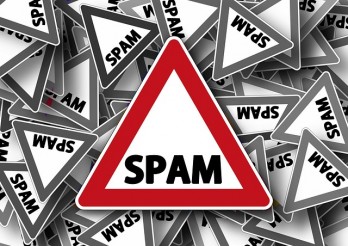Are there risks to guest blogging and posting on LinkedIn? Tips on how to protect yourself against Google penalties
4 February 2016 By Northern Lights
 Guest blogging – writing articles to be posted on other people’s websites – is a really useful tool in the content marketing toolbox. And when it comes to content marketing, the more mentions and links the better. Increased reach, more exposure – it all sounds great, right? Well, not always.
Guest blogging – writing articles to be posted on other people’s websites – is a really useful tool in the content marketing toolbox. And when it comes to content marketing, the more mentions and links the better. Increased reach, more exposure – it all sounds great, right? Well, not always.
If your blog or article content is shared in more than one place, it could – in some cases – lead to a drop in your Google rankings.
Back in 2011, I highlighted a potential SEO issue for PR agencies that publish their clients’ press releases. “By re-posting to a wider audience, you would think that the article would be shared more widely and thus score more highly with Google. But in fact, it could lead to Google scoring both websites down for duplicate content, as it doesn’t know who is the true author and assumes both sets of content to be spam.”
This issue came up recently for Victoria at Northern Lights, and our conversation about it was what prompted me to write this blog post. There are two issues she discussed – posting blogs from the Northern Lights site to her LinkedIn profile and blogs from the site being posted on the CIPR site.
Starting with the latter, Victoria is registered as a blogger on the CIPR Conversation blog. She had thought this would mean writing original, unique content for the site – as is best practice for all guest blog posts. As discussed, posting the same content on multiple sites can harm your search engine rankings.
However, the CIPR instead republishes some of Victoria’s blog posts from the Northern Lights blog – in full without any changes – and the same with a number of other leading communications bloggers.
Since there is a link back to the original article, there is some SEO benefit for Northern Lights, but the duplicate content has the potential to cause issues if it is picked up by Google and the websites involved could be issued with a Google penalty.
So what should Victoria do?
I’d normally advise that Victoria contacts the website owner and requests the reposted content be removed from the site.
However, the CIPR blog is well established, reputable and has a large readership. The CIPR tweets about new blog posts, so they are shared widely and receive a lot of retweets. Arguably there are benefits to having content posted on the CIPR blog in terms of increased profile for bloggers, who have their content shared with new readers.
 Ultimately it’s a decision about the balance of risks versus benefits.
Ultimately it’s a decision about the balance of risks versus benefits.
But there are some things you can do to protect yourself and mitigate against the risk of duplicate content and Google penalties.The main one is to ensure you have a well optimised website. This doesn’t just mean ranking well generally in Google, but also getting new content indexed quickly because you already rank for other relevant content.
So – how do you optimise your site to be indexed quickly in Google?
If you post regular, high quality content (a weekly blog is ideal), Google will get to know your website and the topic(s) you are an expert in. You will then be on Google’s “radar” so each time you publish a new blog post, it will get indexed immediately in Google. When Google indexes your content, it is given a time stamp and you become the official “author”. Then if anyone else copies the content, Google will know who is the original author, and who is the “copier”.
As Northern Lights has an established blog with regular high quality content, the blog ranks very well on Google and new blog posts are indexed quickly.
In the case of Victoria’s content (posted on both Northern Lights and the CIPR sites), the Northern Lights version ranks higher in Google search results than the CIPR’s – so Google is likely to know that Victoria is the original author.
The risk of Northern Lights being issued with a Google penalty is therefore low, but the CIPR leaves itself open to risks of Google penalties if it continues to repost content from other sites.
What to do if you find your content posted on another website
 If you find your content has been reposted by another site, check the domain authority of the site on open site explorer – good sites tend to be at least 25+. Look at the number of back links on the site. If the website looks spammy, you should send a request to the website owner for your content to be removed. Regularly checking and monitoring for copied content from your website should actually be part of your online reputation management (ORM) process anyway.
If you find your content has been reposted by another site, check the domain authority of the site on open site explorer – good sites tend to be at least 25+. Look at the number of back links on the site. If the website looks spammy, you should send a request to the website owner for your content to be removed. Regularly checking and monitoring for copied content from your website should actually be part of your online reputation management (ORM) process anyway.
But don’t wait until your content is copied! There are some pre-emptive actions you can be taking now to protect yourself against penalties for duplicate content.
5 step guide to protecting yourself from Google penalties from duplicate content
The tips below have been tried and tested. In our research, using these tips together (amongst other things) can get content indexed within minutes, compared with some websites taking up to 2-3 weeks.
- There are a number of ways you can protect your blog content against Google penalties for duplicate content, including marking up your content with “rel=author mark up” tags and updating your Google+ profile with content links.
- Build your website on a platform like WordPress, which notifies you of any backlinks. When you write a blog post, you should include internal links (to other posts or pages on your website). Then if someone copies your blog post onto their site, the links will be picked up by WordPress, and you will receive a notification that someone is linking to you.
- Have a live Google+ button on all pages across your site. Always share your blog posts through Google+.
- Use Google feedburner as a subscription service to blogs. While Google feedburner isn’t necessarily the best service, common sense would suggest that if a Google product is actively looking for new content on your site to deliver a service, it will surely notify an internal system there is new content to spider.
- Use schema to mark up content. This is just about applying general SEO good practice. Check out schema.org for more details on this.
If you follow the tips above, you greatly reduce your chances of being issued with a Google penalty if someone reposts your content on their website.
Should you publish blogs on LinkedIn?
Last year, LinkedIn introduced a feature so that anyone can publish blogs on their LinkedIn profile. But Northern Lights is not the only agency to be worrying – is this duplicate content if you publish blogs that appear on your website?
My own view is that I would not advise copying and pasting the same blog to LinkedIn because there is a danger again for duplicate content. I do think it is a good idea to produce a different blog, or a round up blog, or even a summary blog for LinkedIn to avoid the threat of a Google penalty. . However there is no question that reach and engagement is stronger on LinkedIn than most website blogs.
In my own business, we are looking at a weekly blog post on our site and a monthly LinkedIn post as our strategy.
I’m interested to hear from others who have looked at these issues. What are you doing? What are the results?
Have you ever been issued with a Google penalty? How did you overcome it?
Please share your experiences and comments below!
